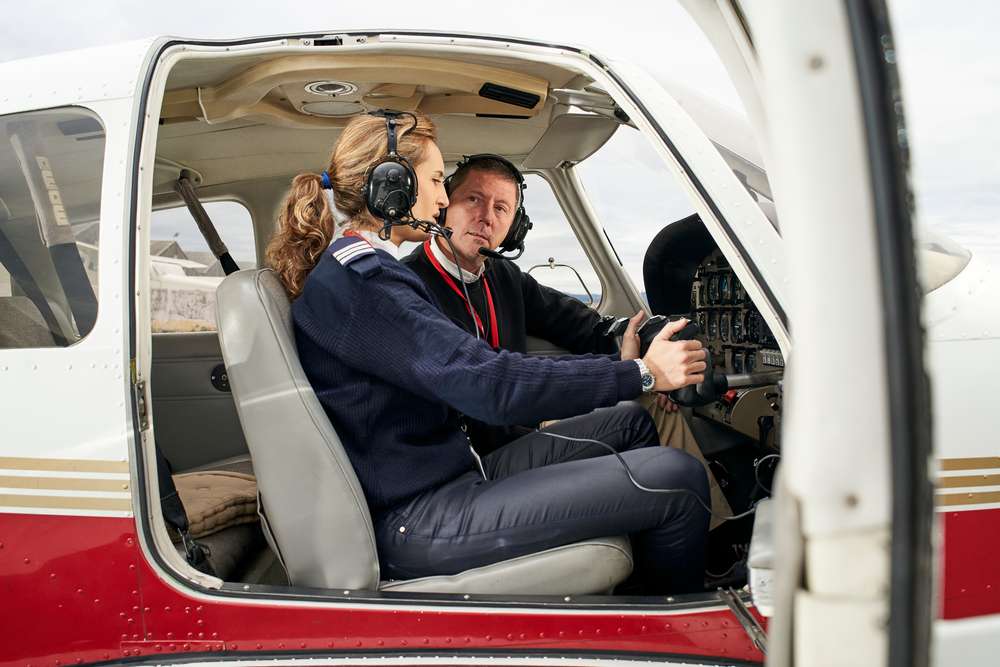Mastering Aviation: Your Complete Pilot Training Guide
Aviation training opens the door to flying for recreation or a professional career. This comprehensive guide explains ground school, hands-on flight instruction, license types (PPL, CPL, ATPL, IR), timelines, medical requirements, costs, and career paths to help you plan the journey from student to licensed pilot.

Aviation training begins with classroom learning and quickly moves into hands-on flying. After ground school covers aerodynamics, regulations, navigation, and meteorology, students transition to flight lessons. Training typically starts in small, single-engine airplanes under the supervision of a certified flight instructor (CFI). Early sessions focus on basic stick-and-rudder skills: taxiing, takeoffs, landings, turns, climbs, descents, and pattern work. As students gain experience they face more complex tasks, including cross-country navigation, radio communication, and flying in varied weather, all designed to build competence and confidence in the cockpit.
What types of pilot licenses are available?
Aviation training leads to several distinct certificates and ratings, each granting different privileges and requiring specific training hours and exams.
-
Private Pilot License (PPL): The most common entry point for enthusiasts. A PPL allows the holder to operate single-engine aircraft for personal and recreational flights, but not for compensation or hire.
-
Commercial Pilot License (CPL): A CPL permits pilots to be paid for flying. It requires more flight time, advanced maneuvers, and knowledge checks, opening doors to careers in charter flying, aerial work, and other commercial roles.
-
Airline Transport Pilot License (ATPL): The highest pilot certificate, required to serve as captain on major airliners. ATPL applicants must meet extensive flight-hour minima and pass rigorous written and practical examinations.
-
Instrument Rating (IR): An add-on qualification that allows pilots to fly solely by reference to instruments, essential for operating in low-visibility or IFR (instrument flight rules) conditions. The IR complements PPL and CPL certificates and is often a prerequisite for many commercial operations.
Each credential builds on earlier training: many pilots obtain a PPL first, add an IR, then progress to a CPL and ultimately pursue ATPL requirements as they accumulate experience.
Typical training timeline
The time to complete pilot training varies with the license sought, training frequency, weather, aircraft availability, and personal aptitude. Common timelines include:
-
Private Pilot License: With concentrated study and frequent lessons, a PPL can be earned in roughly 3 to 6 months.
-
Commercial Pilot License: Progressing from PPL through CPL often takes between 9 and 24 months, depending on whether training is full-time and how students build required flight hours.
-
Airline Transport Pilot License: Achieving ATPL standards typically takes several years, since it requires substantial total flight time and experience in complex operations.
These are general estimates; individual pacing can differ substantially.
Physical and medical requirements
Safety is paramount in aviation, so pilots must meet medical standards to ensure they can operate aircraft reliably.
-
Vision: Perfect eyesight is not mandatory, but vision must be correctable to 20/20 and pilots should have normal color perception for instrument and signal recognition.
-
Hearing: Clear auditory ability is necessary to receive radio and cockpit communications and to interact with air traffic control.
-
General health: A medical examination screens for conditions that could impair performance, such as cardiovascular issues, uncontrolled diabetes, or neurological disorders.
-
Age: There are minimum ages for certificates (for example, 17 for a PPL and 18 for a CPL), while most licenses do not impose an upper age limit. Regular medical checks are required to maintain certification throughout a pilot’s career.
Medical standards vary by country and by the level of license, so consulting the relevant aviation medical authority is essential.
How much does aviation training cost?
| License Type | Estimated Cost Range | Training Hours |
|---|---|---|
| Private Pilot License (PPL) | $10,000 - $15,000 | 40-60 hours |
| Commercial Pilot License (CPL) | $30,000 - $50,000 | 250 hours total |
| Airline Transport Pilot License (ATPL) | $80,000 - $150,000 | 1,500 hours total |
Prices, rates, or cost estimates mentioned in this article are based on the latest available information but may change over time. Independent research is advised before making financial decisions.
Costs depend on the country, school, aircraft rental rates, instructor fees, and how intensively you train. Typical packages include flight hours, ground instruction, study materials, and exam fees. Many aspiring commercial pilots choose flight academies that bundle training into structured programs; these can sometimes offer better value through consolidated pricing and career placement support.
Career paths after training
A pilot certificate opens a variety of career options, each with unique responsibilities and rewards. Common roles include:
- Commercial airline pilot — flying scheduled passenger and cargo services for regional or major carriers.
- Corporate or private jet pilot — operating business aviation flights for companies and private owners.
- Flight instructor — teaching the next generation of pilots and helping students gain the hours required for advanced certificates.
- Emergency services pilot — including air ambulance, search and rescue, and aerial firefighting missions.
- Agricultural pilot — performing crop-dusting and other aerial application work.
- Test pilot — working with manufacturers or flight test centers to evaluate aircraft performance.
Many pilots start in instruction or regional flying to build the flight time and experience needed for larger airlines or specialized roles.
Final thoughts
Becoming a pilot is both demanding and deeply rewarding. From the first solo flight to commanding complex, multi-crew aircraft, training is a step-by-step process that blends technical knowledge, practical skill, and disciplined judgment. Whether your goal is recreational flying, instructing others, or a professional airline career, a solid training plan, consistent practice, and attention to medical and regulatory requirements are the foundations of a safe and successful life in aviation. Research local schools, speak with instructors and current pilots, and plan both your timeline and finances carefully to turn a passion for flight into a lasting career.






